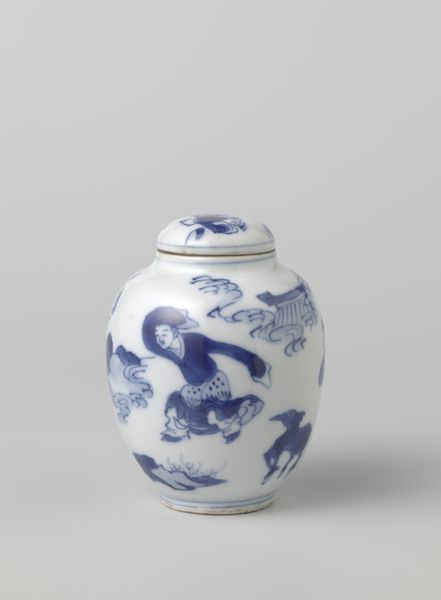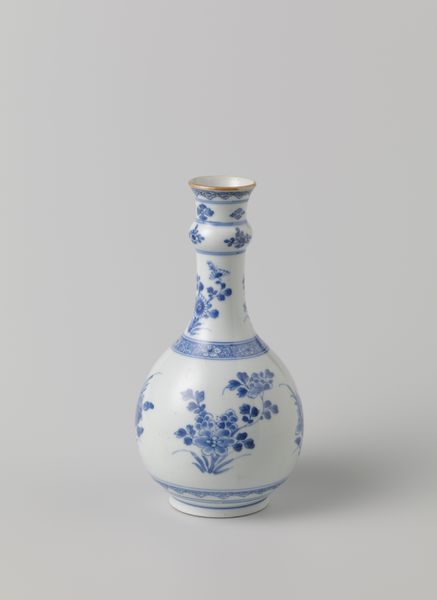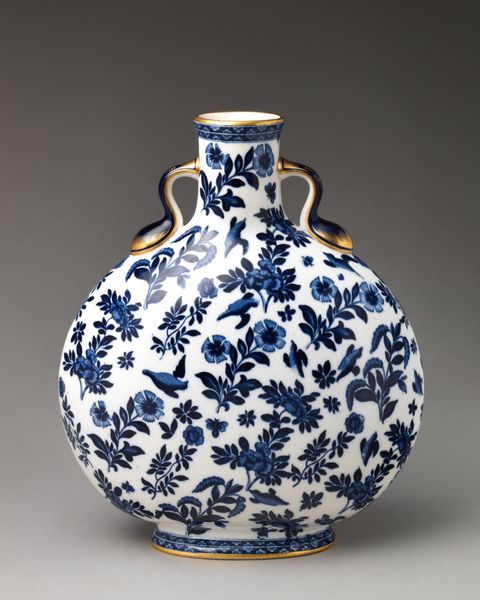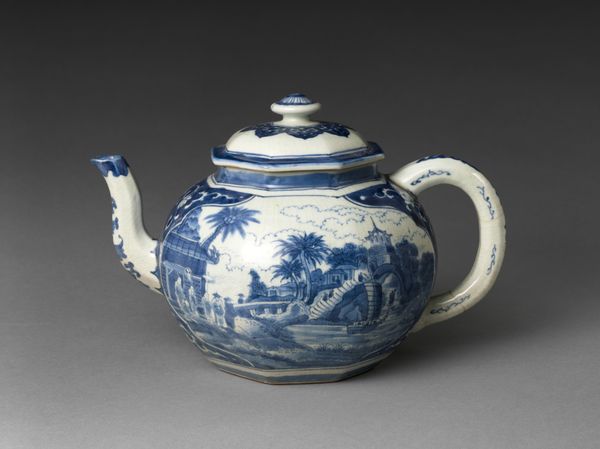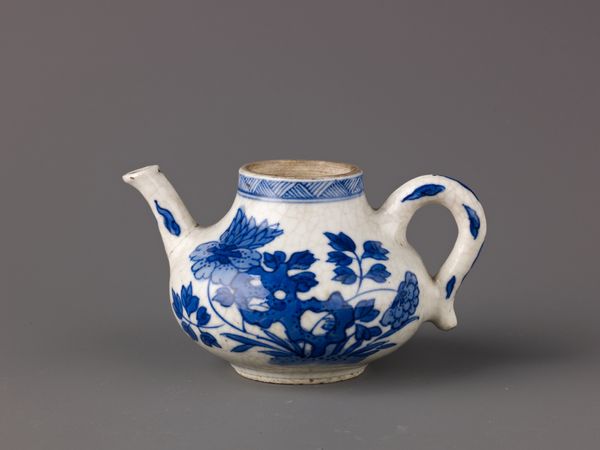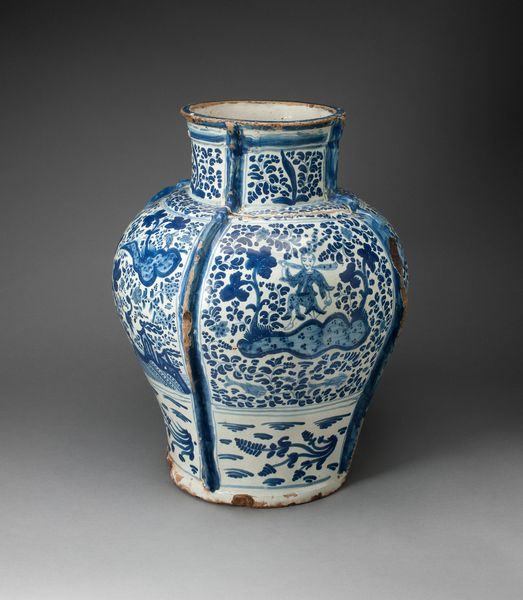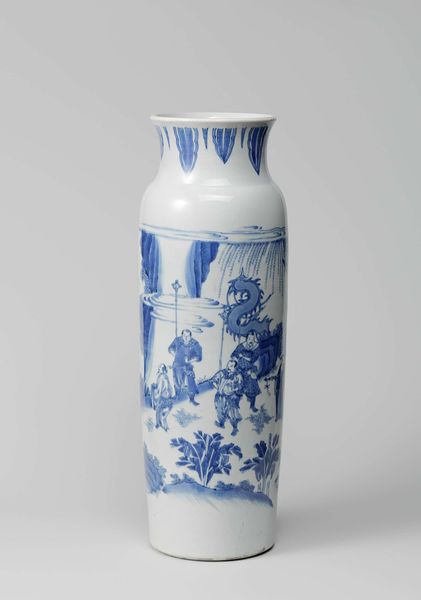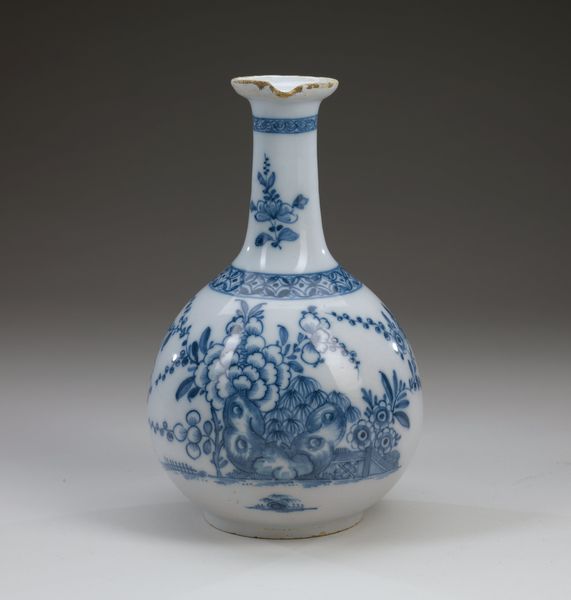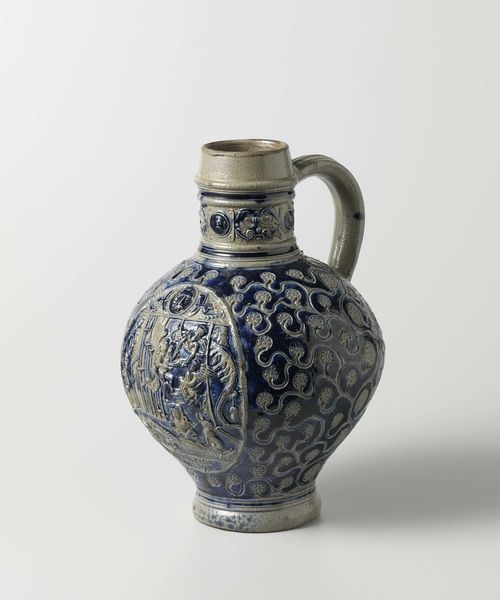
ceramic, earthenware
#
baroque
#
asian-art
#
landscape
#
ceramic
#
figuration
#
earthenware
#
stoneware
#
ceramic
#
decorative-art
Dimensions: height 20.8 cm, diameter 5 cm, diameter 15.5 cm, diameter 8.5 cm, length 12.5 cm
Copyright: Rijks Museum: Open Domain
Editor: This earthenware ewer, dating from about 1660 to 1680, presents a lively, blue and white landscape with figures. It has an almost dreamlike quality. What stories do you think these images tell? Curator: This piece, to me, speaks volumes about cultural exchange and adaptation. The blue and white ceramic, while bearing the mark of Asian techniques, particularly Chinese porcelain traditions, was hugely popular in Europe during the Baroque period. Notice how the landscape imagery might allude to idyllic scenes, pastoral escapes that were valued by the aristocracy. How does this blend of styles and symbols speak to you? Editor: I see the attempt to capture a sort of idealized vision of nature, but with what feels like an almost detached perspective. Is it reaching for something beyond the purely decorative? Curator: Precisely! It delves into the psyche. It mirrors humanity's enduring yearning for harmony with nature and with each other. The scene, with figures dispersed in the landscape, presents the age-old questions of man's place within the broader universe, questions amplified during the age of exploration and enlightenment. Consider how each detail, be it a tree or a figure, acts as a symbol. What emotions or concepts might they trigger within us, passed down through collective cultural memory? Editor: I hadn't considered it that way. I guess I was caught up in the visual appeal without considering its deeper symbolism. Curator: It’s in those layers of meaning that art truly resonates, doesn’t it? Each image becomes an access point to shared cultural narratives and evolving emotional understanding. Editor: Absolutely, this piece is more complex than I initially perceived, bridging continents and philosophies, not just aesthetically, but conceptually. Curator: Indeed!
Comments
No comments
Be the first to comment and join the conversation on the ultimate creative platform.
